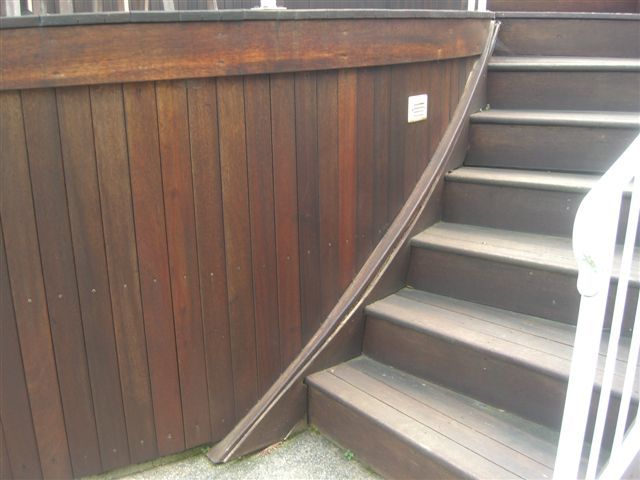Question
We are part way through construction of an open, stain grade staircase. Balustrade is all custom stain grade parts. Newels are big simple box sections. I am seeking advice for spray finishing using polyurethane through a conventional spray gun. Should I assemble balustrade then disassemble and pre-finish? Or assemble balustrade in place and then spray in place? There are pros and cons to both.
Forum Responses
(Finish Forum)
I was involved in staining a big entranceway curved staircase once. This is what we did (I wasn't in charge of this). One day, two people sanding 180 to ensure even stain color. One day, two people staining (one wiping on followed by one wiping off). One day, two people sanding off the second half when the 2nd gallon of stain we were using didn't match in color. One day, two people re-staining. One day, one person masking and hanging poly. One day, one person spraying lacquer seal coat. One day, one person sanding. One day, one person spraying lacquer topcoat. Two days, two people buffing overspray (it's impossible to avoid overspray) and paste waxing.
If you are finishing onsite and you are not the only crew on the job, be prepared for a real pain when all of a sudden everyone needs to do something on the second floor. Consider a scaffold or ladder and have two people spray the case. They play tag on the balusters. This helps you get a wet coat on everything to reduce your overspray and insures that you get good coverage on the underside of any baluster ogees. Be prepared to use a lot of masking paper.
P.S. Spray from bottom to top of stairs - wait for coat to flash off and final coat working your way back down. If you start spraying at top, all dry overspray lands on dry wood, so it helps to get a wet coat down even if it's not a perfect cover coat first lap.
Comment from contributor J:
I know your problem. I have spray finished many staircases, including handrails. Install stairs completely on site. Cover up treads and stair string nearest wall, spray spindles outside and in, then handrail up the outside, then inside newels also. Rub down between coats until finished. Once dry, cover up handrail spindles, newels and spray treads. Drying time is 20 minutes between coats, normally.
